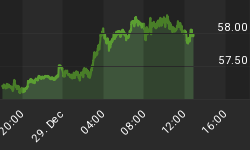The Markit US Flash Manufacturing Report shows U.S. manufacturers record strongest upturn in business conditions for 12 months.
The report also shows input cost inflation is the strongest in nearly two years, hiring is subdued, and export growth is weak.

Key Findings
- Headline PMI rises from 51.5 to 53.2 in October
- Output and new order growth hit one-year peaks
- Manufacturers report fastest expansion of input buying since June 2015
- Input cost inflation accelerates to its strongest for almost two years
Manufacturing production has now increased for five months running, following a slight dip in May. The rate of expansion in October was the fastest for exactly one year. Survey respondents cited an accelerated pace of new business growth and, in some cases, efforts to boost production in anticipation of stronger client demand in the months ahead.
In line with the trend for output volumes, latest data highlighted that incoming new orders picked up at the fastest pace for 12 months. Anecdotal evidence suggested that new product launches and stronger domestic demand had resulted in greater sales volumes. Nonetheless, some firms continued to report delayed decision making among clients, linked to uncertainty ahead of the presidential election.
Meanwhile, new export orders increased only slightly in October, but this was an improvement on the fractional decline seen during the previous survey period. Manufacturers mainly cited strong competition and relatively subdued demand patterns across key global markets.
Higher levels of incoming new work resulted in a greater degree of backlog accumulation across the manufacturing sector during October. The latest rise in unfinished work was the largest for 12 months. Some firms commented on increased capacity pressures at their plants, in part reflecting subdued job hiring in recent months.
Latest data signalled only a moderate rise in payroll numbers, and the rate of expansion was weaker than in September. The latest survey indicated a robust upturn in input buying among manufacturing firms, which was linked to projections of rising demand and associated efforts to boost inventories. Moreover, the increase in purchasing activity was the fastest since June 2015. This contributed to a rise in preproduction stocks for the first time in 11 months. At the same time, finished goods inventories stabilized in October, which ended a four-month period of decline.
Comments From Chris Williamson, Markit's Chief Business Economist
- "Manufacturing showed further signs of pulling out of the malaise seen earlier in the year, starting the fourth quarter on a solid footing. Both output and new orders are rising at the fastest rates for a year amid increasingly widespread optimism that demand will pick up again after the presidential election, which has been commonly cited as a key factor that has subdued spending and investment in recent months."
- "There are also signs that the drag from cost-cutting policies of deliberate inventory reduction is moving into reverse. Inventory-building should therefore provide an extra boost to the economy in the fourth quarter."
- "Weak export growth, attributable to the strong dollar, and lacklustre hiring remain big areas of disappointment, and highlight an ongoing dependency on domestic demand and a need to keep labour costs low amid a still-uncertain economic and political outlook."
Mish Comments
- Are companies ramping up inventories for demand that will not appear? Are they ramping up at all?
- I am skeptical of this report, especially with recent weakness in the auto sector.
- One of the problems with diffusion indices is small companies and large companies are treated equally. GM and Ford have no more weight than companies that employ 300 workers.
- The report noted rising input prices but failed to comment on selling prices. We do not know if they are going up or down.
- It would be nice to see all the components that make up the headline PMI number and their impact on the overall number. That is something ISM provides.
- The rising US dollar rates to dampen exports.
- Markit's flash services report is out on the 26th of October. We may see Williamson's initial GDP estimate for the 4th quarter GDP at that time.
- Williamson's final GDP estimate for the 3rd quarter is 1.0%
For discussion of Markit's 3rd quarter GDP estimate and a look at how ISM breaks down the factors that go into its reading, please see Markit vs. ISM Services: Markit Economist Sticks with 1% Third Quarter GDP Estimate.
















